North Shore shapers Jeff Bushman and Kyle Bernhardt explain why they were inspired to create Hawaii’s first environmentally responsible surfboards.
Words: Catharine Lo Photos: Courtesy of Country Feeling Surfboards & Christen Vidanovic
*Every Thursday (#TBT) Drift is republishing a timeless feature from the archives… enjoy
There was a time - pre-internet, pre-Surfline and pre-webcams - when surfing was the reward of outdoor exploration rather than indoor calculation. When surfers drove up and down the coast, searching for serendipity among the whitewater breakers. Or as lifelong surfer and master shaper Jeff Bushman describes it: “When you would go some place and it was pure, and you were in awe of how special it was… As the Earth changes and gets smaller, these places are disappearing.”
What Bushman has pinned down as “the country feeling” derives from the beauty of his rural surroundings: tree-lined hills that complement a glittering stretch of coastline known to surfers as the seven-mile miracle. There, on the North Shore of Oahu, the astute craftsman built his reputation in the ’80s, designing shapes for hard-core surfers. Today, the Bushman label decorates tens of thousands of boards belonging to all manner of amateurs and pros including world championship tour surfer Pancho Sullivan, Eddie Aikau winner Ross Clarke-Jones, and Pipeline specialist Flynn Novak.
Preserving the sense of wonder that nature affords prompted Bushman and fellow North Shore shaper Kyle Bernhardt to establish Country Feeling Surfboards, Hawaii’s first green label, devoted entirely to designs that incorporate eco-friendly materials - foams made from sugar and soy; hemp, organic cotton, silk and bamboo cloth; and plant-based and solar-cure resins. The positive response they’ve received suggests that surfing has developed a contemporary soul - one that promotes saving the waves over shredding them.
The other blank we’re using has a sucrose base - it comes from sugar cane. We can also do balsa chamber boards or solid wood boards
Catharine Lo: Why do you think that it’s taken so long for shapers to think green?
Jeff Bushman: Because the consumer dictates what the board builders will make. Shapers aren’t going to take the time and do the research and make greener products unless customers want them… Surfers as a whole I don’t think were ever really aware of what they’re riding. They know very little about their shapes to begin with let alone the materials and the way the board is constructed. Now with widespread awareness of global warming, it’s easier to introduce these products and try and make some changes.
Kyle Bernhardt: I think by the end of 2008, all the major labels will have bio boards. You can’t deny the green evolution - just like every supermarket these days has a health food section.
CL: Let’s start with the blanks. The shutdown of Clark Foam brought worldwide attention to the toxicity of TDI (toluene diisocyanate), the main chemical used in conventional blanks. What alternatives to polyurethane foam have you been testing?
JB: Well, one of the blanks we’ve tried is soy-based - it’s 60% soy and made with a chemical called MDI (methylene diphenyl diisocyanate), which is less toxic and more environmentally friendly than TDI. The other blank we’re using has a sucrose base - it comes from sugar cane. We can also do balsa chamber boards or solid wood boards.
CL: You mentioned you’re experimenting with new resins as well. How are these less toxic than ones already in use?
JB: With solar-cure resin, there’s no catalyst used - so there’s no emissions. As soon as the resin is put in ultraviolet light it flash-cures and seals so none of the fumes escape. So it’s quite a bit better for the environment than the normal polyester resins.
KB: It’s about 30% of the normal emissions, so you’re getting a 70% reduction in styrene emissions. It’s really a lot better.
The soy-based blanks have had problems where they are a bit softer and they end up flexing a bit more
CL: And what about these deck inlays?
JB: We’ve started using hemp, organic cotton and bamboo cloth as inlays, and we’re seeing that they hold up really, really well.
KB: With the layer of natural fibre it’s one-third less of your board going in the landfill.
JB: We’d like to be able to offer boards that are completely laminated in either the hemp or the bamboo or a combination of hemp, bamboo, silk, and organic linen cotton to replace the fibreglass. Right now the weight difference outweighs the function - the boards end up too heavy if you do the whole thing in hemp.
CL: How do these boards measure up on performance?
JB: The soy-based blanks have had problems where they are a bit softer and they end up flexing a bit more, so we’ve been trying to use a minimum amount of fibreglass in combination with the other materials to give them strength. All the boards we’re doing are alternative surfboards - fishes, twin fins, single fins, eggs, funboards and longboards. It’s not possible right now to build a super-high-performance shortboard or gun out of these materials because it ends up being too heavy. It’s more about people having the feeling of going surfing than winning a contest.
CL: Are these materials easier or harder to work with?
KB: They’re a little harder to work with. The natural fibre isn’t as malleable as fibreglass.
JB: There are quite a few extra little steps to have the product cosmetically correct. It requires a lot of attention to detail.
CL: A lot of critics say that the boards, overall, are still not very environmentally friendly. What’s your response to their criticism?
JB: I think little steps translate to big steps. These materials are less toxic than what we were using.
KB: We’re not trying to reinvent the wheel. It’s not like surfboards will be the greenest product out there. We’re trying to make a statement that it’s possible to use other materials. We can use natural fibres. We can reduce what we put out.
JB: Yes, we have to start somewhere. The toxicity of the industry - even though it’s a cottage industry - and the amount of waste and pollution that comes from the surfboard industry is minor compared to the auto industry and other manufacturing industries. But we’re the ones playing in the ocean, and it just seems like the right thing to pursue.
CL: You’ve called your venture Country Feeling Surfboards - what does this mean for you guys personally?
KB: For me it represents a simpler path of life. One in which you can appreciate your natural surroundings - the fresh air, the trees, the plants in the ground.
JB: Watching my garden grow. Getting on my bike and pedalling down to my backyard to surf. Country feeling is that magic we often take for granted. We need to appreciate what we have while we have it.
CL: Do you reckon just about anyone can find it?
KB: I think it’s a mindset. Even if you’re in the middle of a crowded city, you can still find a park, a bird, or anything that reminds you or gives you that connection to nature. There are lots of triggers.
CL: And as the planet gets more and more developed, how do we make sure we’ll still have it in the future?
JB: By living the lifestyle, we perpetuate the lifestyle. And by educating the children that it’s okay to get in the world and make it a better place, [that] it would be easy to change the world. They have to be guided.
For more information vist www.countryfeelingsurfboards.com
















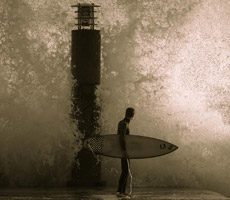
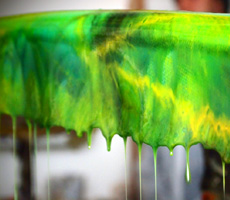
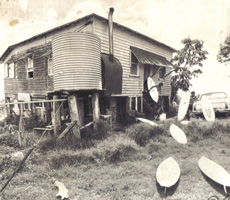
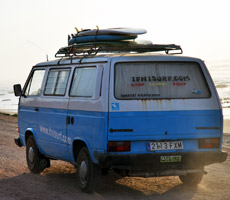

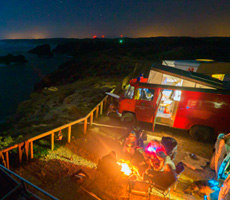

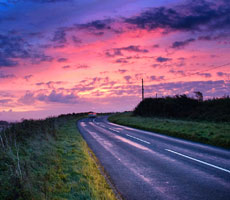

No Comments